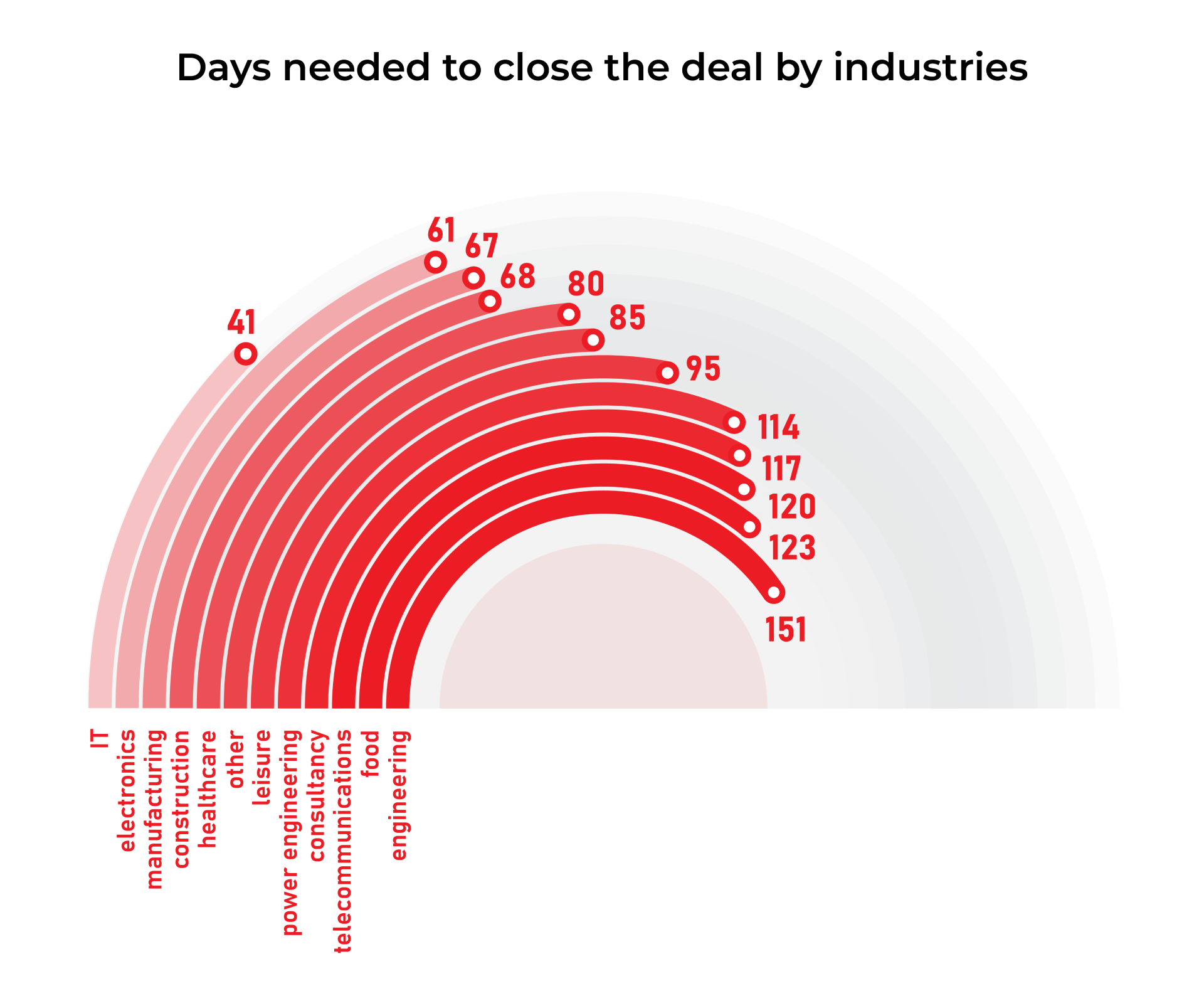Accelerate Your Sales: 5 Proven Strategies to Shorten the Sales Cycle
Closing a deal can take a long time. In some industries, sales cycles can last months with an uncertain outcome. To limit the number of hours you spend working on unsuccessful business opportunities, try the following 5 tips on how to speed up a long sales cycle.

The time from a first contact with a customer to closing a deal is often referred to as a sales funnel or flywheel. In some companies, they may not even use any specific term for it. Without exception, however, every company wants the time needed to close a deal to be as short as possible.
If you do not run a bakery or similar type of business where the purchase takes place immediately, the sales cycle consists of several steps spread over days, weeks or months. According to eWay-CRM statistics, the sales cycle tends to be particularly long in B2B industries, such as engineering.

Why long sales cycles are a bigger problem than you think
The disadvantage of a long sales cycle is the uncertain result. A potential customer can lose interest or choose a competitor at any time and your company will lose the costs associated with a failed business opportunity.
Although you can fight it by reducing the price, and thus increase the percentage of successfully closed deals, it will also reduce the income from each order. The solution that makes much more sense is therefore to shorten the time of a sales cycle.
So how do you spend less time serving potential customers without affecting the quality of your services?
1. Target the right audience
A lot of work can be done by targeting the right audience even before there is any contact with the customer. Communication with the wrong audience usually does not lead to a successful end. But sometimes in B2B you speak to the ideal company but not the right decision-maker.
Effective contact management can save a lot of time. As a best practice, keep a record of a contact's industry, position in the company, and communication history. If you decide to reach customers via phone, a well-prepared list of contacts will eliminate a lot of dead-end calls.
Email marketing is not very different to cold calling. Broad targeting leads to inquiries from recipients who do not show any serious interest or immediately request removal from the mailing list. It is far more effective to prepare content tailored to the specific list of recipients. In addition to the relevant offer, customers will also appreciate a personalized approach and communication will be factual from the very beginning.
2. Make information accessible to your customers
For larger purchases in a corporate environment, decision-makers need enough time to think and discuss with colleagues. This is one of the reasons why B2B purchasing processes tend to be so long. However, the whole process can be sped up when the customer receives answers to their questions in advance. It is also more pleasant for customers not to have to ask in detail, and sales reps can then use their time more effectively.
Therefore, in addition to information on products and services, there should be clear and transparent price information on the web and elsewhere. Customers who are unpleasantly surprised by additional charges at the last minute often tend to back down. The time spent dealing with the customer is then gone forever.
3. Automate the purchasing process
The purchasing process includes a lot of tasks that take a lot of time for sales reps if they perform them manually. However, there are software solutions that allow you to fully or partially automate many steps. This makes communication with the customers much faster.
All you have to do is analyze your purchasing process and name the individual steps from the first contact with the customer to closing the deal. The best way to clearly set up the whole process step by step is offered by CRM systems, in which business opportunities are managed and designed as individual folders.
In such folders, users will find contacts, all communication, documents, and also a workflow - a set of steps corresponding to the statuses in which the business opportunity may appear. Workflow statuses can also be followed by automatic actions, such as creating a new task for the financial manager to issue an invoice or a task for the sales rep to contact a customer by phone. CRM users do not have to check deals manually and customers do not have to wait longer than necessary this way.
4. Speed up communication with customers
If customers wait a long time for an answer, they often use this time to look for another solution. Luckily, CRM automations can speed up communication. One of the key points is at the very beginning of the business opportunity when the pressure to process the answer quickly is greatest.
Online opportunities often come via a web form, to a sales email such as [email protected], or in a chatbox, thanks to which the deal can be processed immediately. CRM can be connected to these communication channels, which allows you to automatically create a new business opportunity in CRM every time a new message arrives from a potential customer. Deals are thus available to the entire team in one place, and sales reps do not have to check each inbox separately. The answers will be given to customers sooner and the probability of success will increase significantly.
5. Sales is not about convincing, it is all about helping
The last advice will not shorten the sales cycle, but rather increase a number of successfully closed deal. Speed is just a small part of success. The company's efforts to speed up the sales cycle must not affect customers who need peace of mind to make their decisions. After all, they often wait for management's decision or the completion of another project.
Instead of bombarding customers with emails and phone calls, it is more effective to give them enough room to make decisions and to be available whenever there is a chance to take a business opportunity one step further.
In all emails and phone calls, it is also necessary to stay friendly, positive and professional. In a business relationship, professionalism and positive attitude is the basis with which everything is easier.
Conclusion
Speeding up a long sales cycle is crucial for enhancing business efficiency and improving the likelihood of closing deals. By targeting the right audience, making information readily accessible, automating the purchasing process, accelerating communication, and focusing on assisting rather than convincing, businesses can significantly reduce the time it takes to finalize sales. These strategies not only streamline operations but also ensure that customer needs are met promptly and professionally, increasing satisfaction and trust. As we adapt to ever-evolving market demands, integrating these tactics will be essential for companies looking to stay competitive and responsive in their sales efforts.











